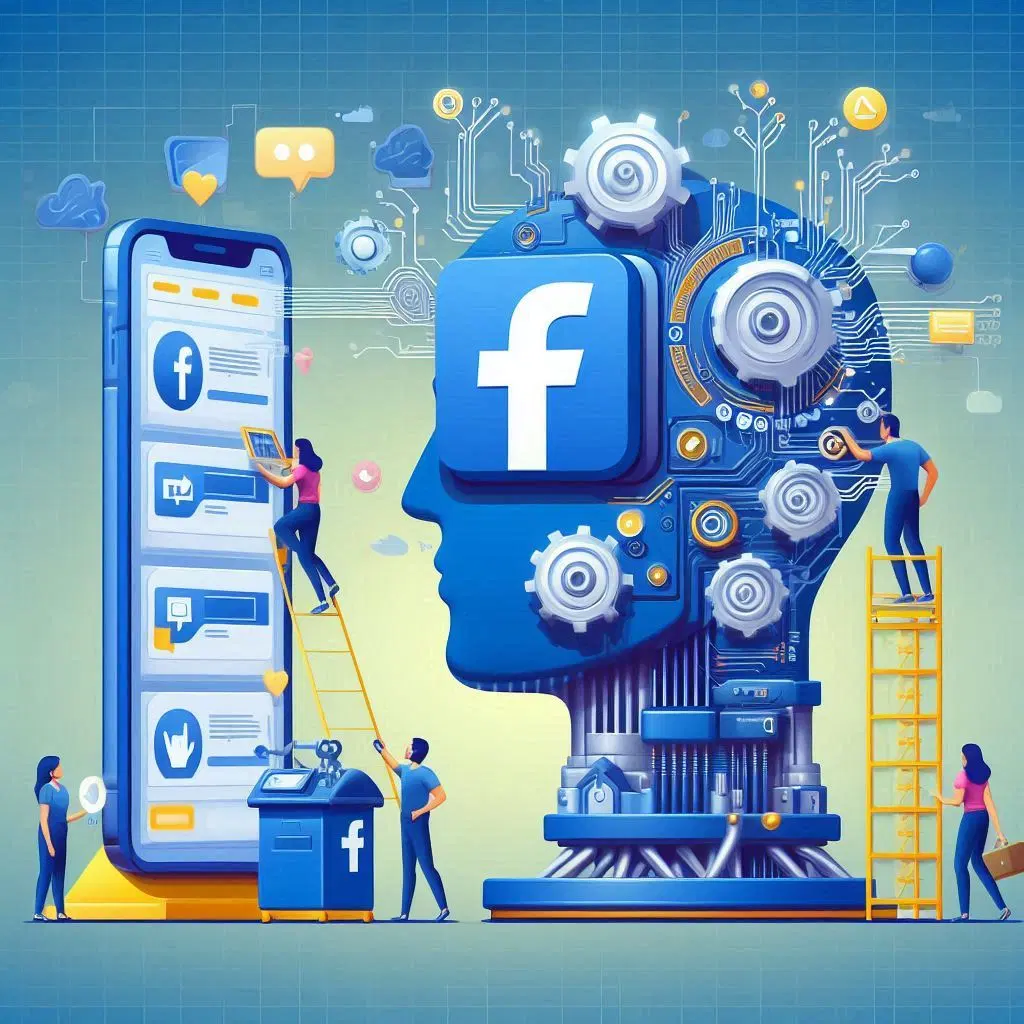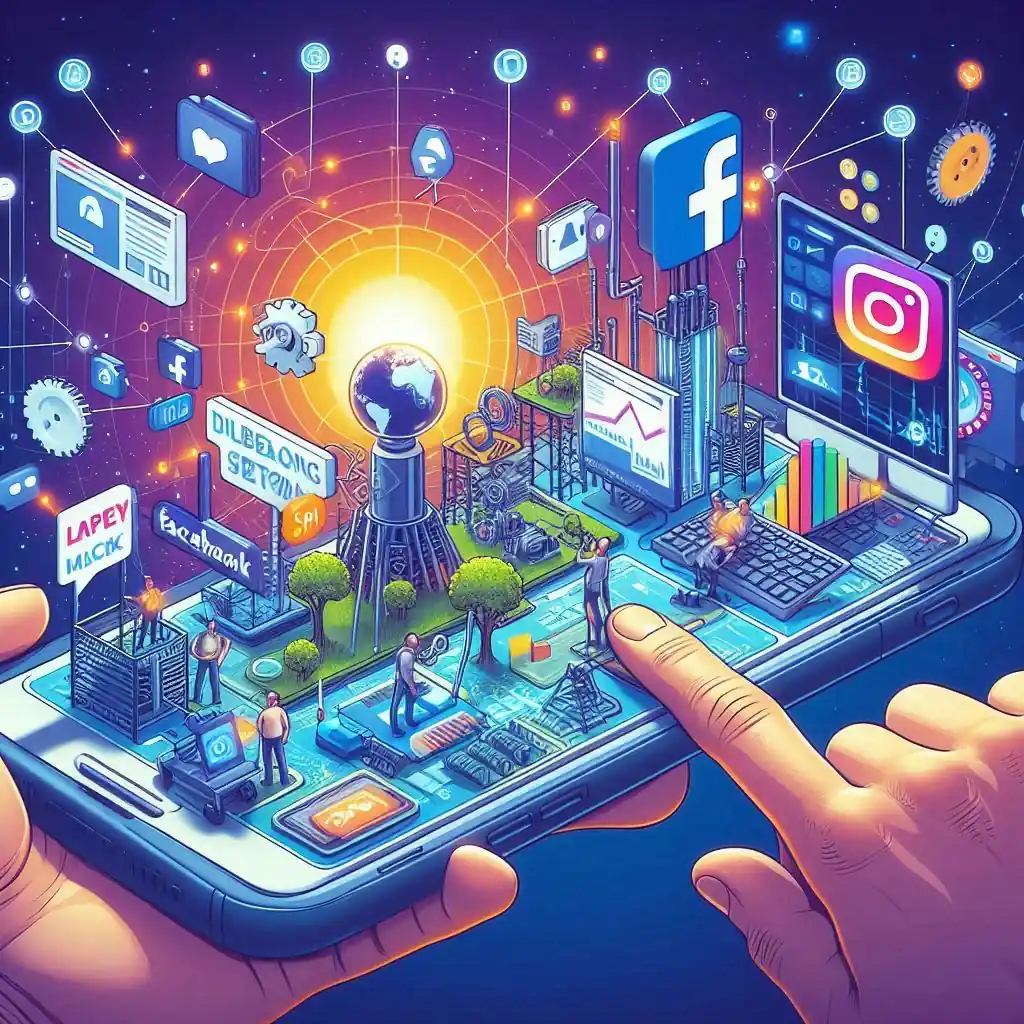Meta and Digital Marketing: How Facebook's Evolution is Taking Online Advertising into the Future
The landscape of digital marketing has changed considerably over the last decade, and one significant push behind this was Meta, formerly Facebook. Therefore, as a freelance digital marketer, there is a great need to recognize how Meta’s suite of platforms is deeply woven into contemporary digital marketing practice. Innovations and ad technologies from Meta combined with the firm’s global outreach have revamped the way brands and businesses reached consumers in the digital space.
In this post, we’ll examine the relationship between Meta and online marketing for advertising and targeting an audience, as well as futures of marketing strategies

The Rise of Meta: A Brief Overview

In 2021, Facebook changed its company name to Meta, the movement of a medium away from being primarily a social media medium, toward building what has been called the “metaverse”-a virtual world bringing augmented reality, virtual reality, and immersive digital experiences into being a fullness of sense and experience. Meanwhile, however, central platforms of Meta remain Facebook, Instagram, WhatsApp, and Messenger
These are instrumental to a digital marketer’s power because more than two billion active users enable Meta to offer unmatched opportunity for connecting audiences by demographics, interests, and behaviors.
1. The Meta ad ecosystem
Maybe one fundamental imprint that Meta leaves on digital marketing is the advertising ecosystem. It allows businesses of all kinds and size, in huge variation, to reach their target audience through its robust ad products.
a) Facebook and Instagram Ads
Out of all Meta’s advertising platforms, the most used are Facebook and Instagram. It gives marketers the following choices:
It used great ads, targeted very demographically, by interest, behavior, and even past interactions.
There are many ad formats, such as image ads, video ads, carousel ads, and dynamic product ads, in an attempt to engage users into various experiences.
Real-time tracking provides for opportunities for marketers to adjust tactics and optimize campaigns in the moment.
With the focus on visuals on Instagram, and the community-building functions that are so rich on Facebook, business ventures can design richer campaigns appealing to a larger audience.
b) Messenger and WhatsApp Business
Messenger and WhatsApp are the best channels for digital marketers to reach consumers. Through chatbots and automatic reply bots, brands will be able to:.
Servicing customers in real-time with customer service tailored toward them.
It will involve lively discussions to promote products, spread offers, and solicit customer feedback.Such personalized, direct communication is increasingly important in the digital marketing mix as consumers demand faster, more human-like interactions.
2. Meta maintains its data-driven approach.
One of Meta’s most strong assets is its vast reservoir of user data. Freelance digital marketing professionals can access that pool of data in order to create very specific targeting in the marketing campaigns. Here is how Meta is using data to empower marketers:
a) Audience Insights and Custom Audiences
Meta’s data-driven marketing tools provide detailed information about user behavior, preferences, and demographics for marketers. Custom Audiences: This enables digital marketers to retarget users who have visited their sites, used their apps, and even users who have interacted with their brand on Meta’s platforms. Lookalike Audiences: Marketers can reach new users who possess characteristics similar to their existing customer base.
It’s on point, meaning that they ensured that viewers of those ads are not just huge numbers but really the right people: the ones most likely to engage in your content, product, or service.
b) Ad Performance Metrics
Meta easily tracks and optimizes performance for ads. Through the tools of Meta, track such metrics as impressions, clicks, conversion rates, and many more Return On Ad Spend (ROAS) in real time. That means opening up doors to:
Change the bids and the budgets of failing ads.
Lastly, address approaches that result in a positive outcome.
Test alternative creatives and copy to optimize for higher engagement or conversion.
3. The Future: Meta and the Metaverse
Meta’s metaverse is unlocking every dimension in digital marketing. It is an immersive, interconnected virtual environment that, potentially boundlessly, might unlock novel and exciting ways for an engaging brand to interact with its audience. Imagine Hosting virtual events or product launches in a virtual reality space.
Using AR to “try on” clothing or see a product in a home before purchasing.
Some possible innovative applications include:
NFTs (non-fungible tokens) as part of brand promotions or exclusive digital content.
Since this full realization of the metaverse is still a few years ahead, adoption itself can be a competitive business advantage for early movers. Investments in AR and VR technology by Meta are opening opportunities for brands to differentiate themselves in products or experiences.
4. Challenges and Privacy Issues Of course
dominance by Meta on digital marketing brought about some challenges in the topics of privacy and data usage. Of late, now that Apple, through iOS 14.5, released an update, it has been very challenging to track users’ activities across apps and websites. Such moves would have compelled Meta to think about transforming its advertising ways and spend on first-party data solutions. Such changes in privacy trends, therefore, should be monitored by a freelance marketer. For instance he or she will emphasize developing real relationships with customers and utilize email marketing to ensure that data is protected in conjunction with changing rules surrounding data protection.
Conclusion
Lorem ipsum dolor sit amet, consectetur adipiscing elit. Ut elit tellus, luctus nec ullamcorper mattis, pulvinar da
Leverage the Power of Meta Digital Marketing. Meta has changed the face of digital marketing by innovating through tools that enable extremely niche accesses with businesses, performance tracking, and innovation with new media forms, including AR and VR. With freelance digital marketers, Meta’s platforms open unlimited avenues of adding value to clients through bespoke, data-driven campaigns. Keeping the trend of evolution, be it metamorphous rise of metaverse, galvanizing Meta to hold the top position in the next phase from the curve in a game of digital marketing. Success of the effort shall depend not only upon wielding the power of Meta’s platforms but also on adapting to different changes in the definition of privacy and technology about the future of online marketing.

